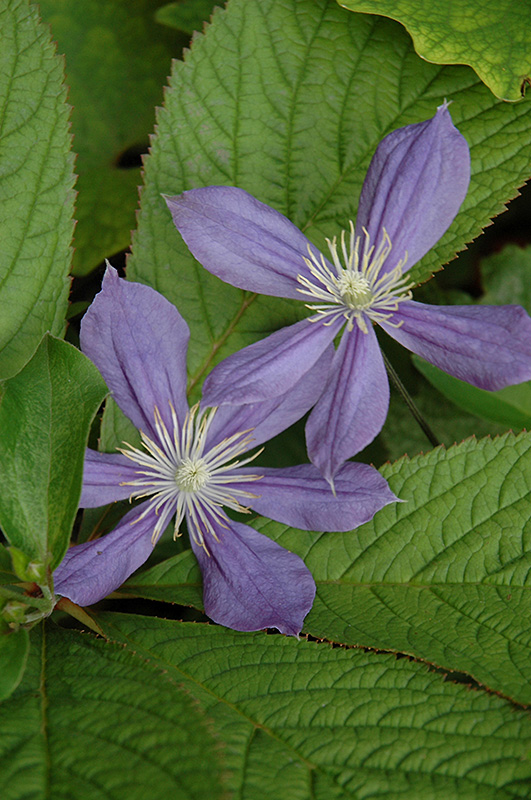Arabella Clematis
Clematis integrifolia 'Arabella'
Height: 6 inches
Spread: 24 inches
Sunlight:
![]()
![]()
Hardiness Zone: 4
Other Names: Solitary Clematis
Description:
This variety provides an abundance of medium-sized flowers in a wonderful powdery blue color with brightly contrasting centers, one of the heaviest bloomers; more like a perennial than a vine, tends to mound, makes a great groundcover in the garden
Ornamental Features
Arabella Clematis features bold nodding powder blue recurved flowers with lemon yellow anthers at the ends of the stems from early summer to early fall. Its pointy leaves remain green in color throughout the season.
Landscape Attributes
Arabella Clematis is a multi-stemmed perennial with an upright spreading habit of growth. Its medium texture blends into the garden, but can always be balanced by a couple of finer or coarser plants for an effective composition.
This is a relatively low maintenance plant. It is a Type 3 clematis; each spring it should be pruned back to within a few inches of the ground, as it flowers on new wood of the season. It is a good choice for attracting hummingbirds to your yard. It has no significant negative characteristics.
Arabella Clematis is recommended for the following landscape applications;
- Vertical Accent
- Mass Planting
- Rock/Alpine Gardens
- General Garden Use
- Groundcover
Planting & Growing
Arabella Clematis will grow to be only 6 inches tall at maturity, with a spread of 24 inches. It grows at a medium rate, and under ideal conditions can be expected to live for approximately 20 years. As an herbaceous perennial, this plant will usually die back to the crown each winter, and will regrow from the base each spring. Be careful not to disturb the crown in late winter when it may not be readily seen!
This plant does best in full sun to partial shade. It does best in average to evenly moist conditions, but will not tolerate standing water. It is not particular as to soil type or pH. It is somewhat tolerant of urban pollution. Consider applying a thick mulch around the root zone in both summer and winter to conserve soil moisture and protect it in exposed locations or colder microclimates. This is a selected variety of a species not originally from North America.
